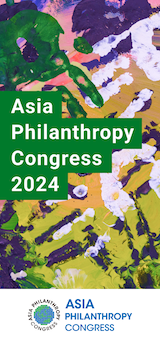‘Catch it early, catch it upstream’. When it comes to mental health issues in children, this phrase holds greater resonance. Historically, mental health issues have been tackled reactively as they emerge in individuals and communities, but we need to refocus our attention to early intervention as a critical part of the solution. As we face a bleak landscape of distress and rising levels of inequality and trauma affecting millions of children, now is the time to prioritise conscious prevention over retrospective inadequate action.
Faced with the fact that 50 percent of adults with a mental health difficulty start experiencing symptoms by the age of 14, it is clear that early and targeted intervention is crucial to minimising these issues before they take hold.
What we know for sure is that a young person’s formative years are integral to their future. Greater stress in early childhood can infringe on the sensitivity and vulnerability of early brain development and risk life-long effects in terms of relationship building, academic achievements and behavioral patterns. In research commissioned by BBC Children in Need, experts from across clinical services, voluntary and education sectors agreed on the importance of supporting mental health, specifically in the 8-13 age group since 2019.
Why is this age group critical? We know that during this critical stage in life when children transition from primary to secondary school, this progression is life-changing but it can also be destabilising and traumatic. Quite often, children are moving from a sheltered, smaller primary school where relationships have been established over a long period of time, to being thrust into huge and impersonal secondary schools where they are expected to sink or swim. Therefore, this is the critical age group, when they are increasingly susceptible to mental health issues manifesting.
What we also know is, not one size fits all. Within this age group, children are exposed to varying severities of risk factors including poverty, disability, discrimination or trauma. Time is what really sets the early intervention model apart from more reactive measures. The method allows practitioners to take a step back and consider an intervention specific to an illness stage. Additionally, the targeted nature of the approach takes into account the sociodemographic or health related risk factors specific to an individual faces and crafts an individualistic approach, which is both preventative as well as effective.
For instance, there is a clear intersection between poverty and mental health. Despite being one of the wealthiest nations in the world, the UK struggles with significant and growing levels of poverty with an estimated 4.3 million children and young people living in destitution. This rising cost of living has pushed families to the brink, forcing them to choose between heating the house or putting food on the table; it is impossible to overestimate how much poverty influences the problems facing households today.
It is also important to consider that some groups are more likely to experience poverty than others. According to the Child Poverty Action Group, 47 percent of children from Asian and British Asian families and 51 percent of children in Black African/Caribbean and Black British families are experiencing poverty, compared to 24 percent of White families. Thereby an effective promotion, prevention and early intervention strategy relies on a child-specific approach.
Contrary to its benefits and potential to deliver the greatest impact on society’s overall health and emotional wellbeing, the early intervention model lacks sufficient research and funding. However, the fault does not lie with just one body or institution, what we need is cross sector collaboration and we need it now.
Starting at home, the role and importance of parents, carers and other trusted adults can not be understated. Naturally, parents and carers have an invested interest in their child’s emotional wellbeing and if equipped with the correct tools and resources, hold the power to be a part of the ‘mental health system’ – providing homegrown support. More than anything, positive relationships and having open and honest conversations can provide the opportunity to address a rising concern before it becomes an issue.
Calling upon the charity sector, we need to encourage more funders and statutory service commissioners to fund systemic and multi-faceted prevention programmes for children and young people. One way of doing this is supplementing an absence of physical infrastructure with digital infrastructure. BBC Children in Need’s ‘A Million & Me programme’ explores the digitisation of mental health services and recently awarded £1 million to The Children’s Society to expand their online offerings as well as on the ground work.
In terms of policy, the public sector holds the power to bring about strategic action against mental health inequalities; one way in which they can achieve this is through investing in early intervention to bolster the mental wellbeing of children and young people. These incremental steps could also include funding the wider children’s workforce and education sector to provide longer term and iterative early-stage support for wellbeing issues.
It is clear that developing a universal and early intervention model of care is no easy feat. It will involve a long and complex journey and funding from across health authorities and the sector for the long term, to engineer a scalable, creative and high-impact solution to counter this systemic issue.
Above all, we must ensure we centre the voices of those we wish to impact. Therefore, it is essential that we provide a platform to children and young people to influence the design and the implementation of the very solutions that will define their lives and mental wellbeing going forward. Recognising the systemic nature of mental health issues and a community led infrastructure which builds positive relationships, is the only way of turning back the tide.
Fozia Irfan is the Director of Impact and Influence at BBC Children in Need






Comments (0)